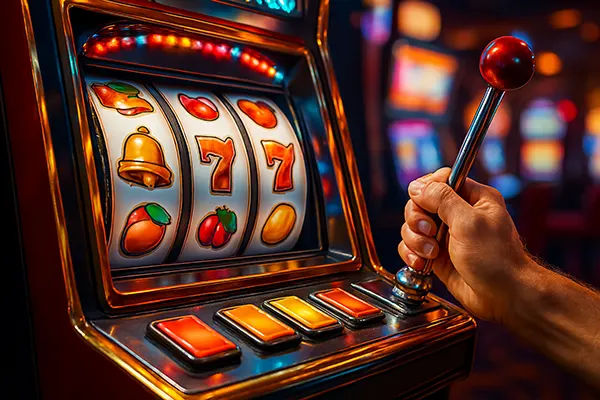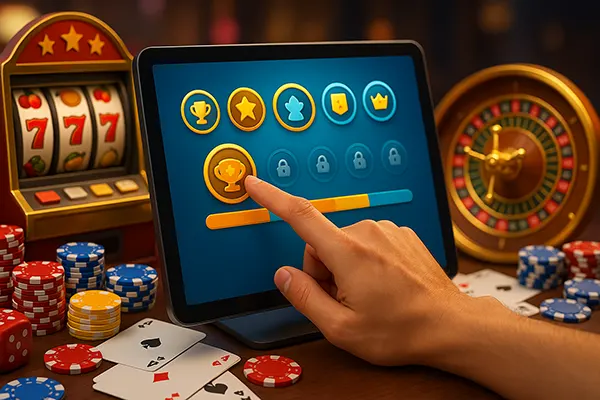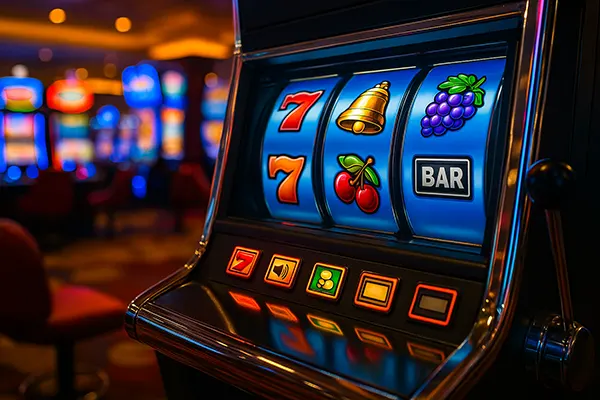Psychological Triggers in Online Slot Design: How Players Are Kept Engaged

Online slot games are more than just reels and symbols. Behind the colourful animations and exciting sound effects lies a carefully crafted psychological architecture designed to keep players engaged. These strategies are subtle but incredibly effective, often influencing behaviour in ways players may not even realise. Understanding these triggers offers insight into how online slots maintain user attention and extend gaming sessions.
Reward Systems and Near-Misses
The reward system is central to slot design. Every spin represents the potential for a payout, and this anticipation triggers dopamine release in the brain—similar to the response found in other forms of reward-based learning. Wins, even small ones, reinforce continued play through this biochemical response.
One of the most common psychological tools is the “near-miss” effect. A near-miss occurs when a spin comes close to a win, such as two jackpot symbols landing and the third just missing the payline. Studies have shown that near-misses increase heart rate and arousal, motivating players to keep spinning in pursuit of the “almost won” reward.
In combination with frequent small wins, this creates a feedback loop. Players receive just enough positive reinforcement to continue playing, even if they are losing over time. This balance of win frequency and perceived proximity to larger prizes keeps engagement levels high.
Variable Ratio Reinforcement and Its Influence
Slots operate on a variable ratio reinforcement schedule, meaning rewards come at unpredictable intervals. This is the same principle used in gambling and even in social media algorithms. The unpredictability makes the next spin feel potentially more rewarding, which compels players to continue playing to reach the next “big” win.
This system is more engaging than predictable reward patterns. In fact, studies from behavioural psychology confirm that variable reinforcement schedules create the highest response rates and resistance to extinction. It’s why players often stay longer at a machine, even after extended periods without significant wins.
Additionally, game developers fine-tune the return-to-player (RTP) percentages to maximise this effect. By maintaining an RTP that allows for frequent low to mid-level wins, the illusion of success is sustained—even when the overall return is negative for the player.
The Power of Visuals and Audio
Modern online slots are packed with vibrant visuals, immersive themes, and captivating soundtracks. These elements are not only aesthetically pleasing but also strategically implemented to enhance engagement. Animations for wins, bonus rounds, and even losses are designed to stimulate and retain player interest.
Sound plays a key role in reinforcing behaviour. Winning sounds, even for minimal payouts, are often loud, cheerful, and celebratory. This creates a false sense of accomplishment and encourages continued play. On the other hand, losses are usually silent or paired with subtle effects, making them psychologically less impactful.
Additionally, bright colours, dynamic interfaces, and flashing lights are employed to mimic the sensory experience of physical casinos. These features heighten arousal and maintain visual stimulation, which keeps players mentally engaged longer.
Theme Consistency and Emotional Connection
Theme-based slots help players emotionally connect with the game. Whether it’s an ancient Egyptian adventure, a superhero narrative, or a slot based on a popular movie franchise, a strong theme provides familiarity and continuity across sessions.
This connection goes beyond aesthetics. Characters, storylines, and evolving gameplay features within themed slots create a feeling of progression. The illusion of a journey or mission encourages players to return and “complete” experiences that are often designed to be never-ending.
Emotional investment also makes players more likely to spend real money. Familiar narratives and beloved characters provide a comfort factor that reduces friction in the decision-making process, especially during microtransactions.

Gamification and Player Control Illusions
Gamification has become a staple in online slot design. Progress bars, missions, achievements, and leaderboards simulate video game mechanics that appeal to a broader demographic. These elements create a sense of purpose, making gameplay feel more skill-based, even when outcomes remain entirely random.
Features like bonus rounds and “pick me” games allow players to make choices, giving the illusion of control. While these selections are often predetermined or have minimal impact on the result, the act of choosing makes players feel more involved in the game’s outcome.
Level-up systems and daily challenges also serve to build habits. By providing goals and timed rewards, developers encourage repeat visits and long-term engagement. These mechanisms convert casual play into habitual behaviour, often unnoticed by the user.
Retention Strategies Through Bonuses and Notifications
Online casinos use targeted retention strategies to keep players engaged outside the core game mechanics. These include time-limited bonuses, free spins, and personalised offers delivered via email or app notifications. Such features exploit the psychological principle of urgency—players are more likely to act if they believe an offer is expiring soon.
Notifications often arrive after periods of inactivity to re-engage lapsed users. The reminder of a “waiting bonus” or “unclaimed spins” leverages loss aversion, nudging players to return so they don’t miss out on perceived value.
Additionally, loyalty programs reward continued play with points, status levels, and exclusive content. These systems are engineered to build attachment and commitment, making it psychologically harder to leave a platform once a player has invested time or money.




